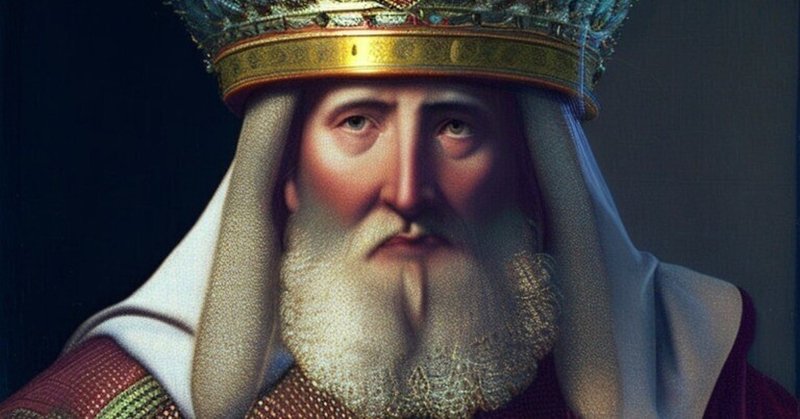
英語長文問題クエスト Part 94 (テーマ:カール大帝)
英語の読解力を伸ばすには多読が必須!特に、TOEFL ibt というテストでは、かなり高度な読解力が必要ですし、何より、このTOEFL ibt という試験が難しいことの理由の1つに、日本語でも勉強していないアカデミックな内容の文章が出題されることです。
このクエストを進めれば、英語の読解力と知識を同時にアップデートさせられるでしょう!
さぁ、今日のクエストを進めてみましょう!
Passages
Title: Charlemagne: The Father of Europe
Charlemagne, also known as Charles the Great or Carolus Magnus, was a medieval ruler who profoundly shaped the course of European history. Born in 742, he became King of the Franks in 768 and later, in 800, was crowned Emperor of the Romans by Pope Leo III. His reign marked the Carolingian Renaissance, a revival of art, culture, and learning in the Frankish Empire, laying the foundation for the medieval European civilization.
Early Life and Ascension to Power
Charlemagne was the son of Pepin the Short and Bertrada of Laon. He and his brother, Carloman, inherited the Frankish kingdom upon their father's death. After Carloman's death in 771, Charlemagne became the sole ruler of the Franks. He expanded his kingdom through a series of military campaigns, ultimately becoming the ruler of a vast empire that included modern-day France, Germany, Belgium, the Netherlands, Switzerland, Austria, and parts of Italy and Spain.
Charlemagne’s Cultural Patronage
One of Charlemagne's significant contributions was his patronage of arts and education. He invited scholars from across Europe to his court, creating a cultural and intellectual center. Under his rule, monasteries became hubs of learning, preserving ancient texts and producing beautiful manuscripts. This cultural revival laid the groundwork for the development of medieval European culture and scholarship.
Legal and Administrative Reforms
Charlemagne implemented legal and administrative reforms that had a lasting impact on European governance. He standardized weights and measures, ensuring uniformity in trade. He also established a legal code, the Capitularies, which clarified laws and regulations. His emphasis on education led to the training of skilled administrators, ensuring effective governance throughout his empire.
Charlemagne’s Religious Influence
Religion played a vital role in Charlemagne's rule. He maintained a close relationship with the Church, and his reign saw the Carolingian Renaissance in religious scholarship. He supported the spread of Christianity and played a significant role in the Carolingian minuscule, a standardized script used in manuscripts, facilitating communication across his diverse empire.
Legacy and the Idea of Europe
Charlemagne's reign left an indelible mark on European identity. His empire laid the foundation for the Holy Roman Empire, and he became a symbol of Christian kingship. Later generations, including rulers like Napoleon Bonaparte, sought to emulate his legacy, associating their reigns with his name. Charlemagne's influence on the idea of Europe as a united entity can still be seen today, making him a pivotal figure in the continent's history.
Questions
When was Charlemagne born?
A) 742
B) 768
C) 800
D) 771What empire did Charlemagne rule over?
A) British Empire
B) Ottoman Empire
C) Frankish Empire
D) Roman EmpireWhat significant event happened in 800 during Charlemagne's reign?
A) He won a major battle against the Moors.
B) He was crowned Emperor of the Romans.
C) He established a new legal code.
D) He invited scholars to his court.Which areas were part of Charlemagne's empire?
A) France, Germany, and Italy
B) England, Scotland, and Wales
C) China, Japan, and Korea
D) France, Germany, Belgium, and parts of Italy and SpainWhat was the Carolingian Renaissance?
A) A revival of art, culture, and learning in the Frankish Empire.
B) A series of military campaigns led by Charlemagne.
C) A religious movement in medieval Europe.
D) A political alliance between European kingdoms.What role did Charlemagne play in religious scholarship?
A) He supported the spread of Islam.
B) He led the Protestant Reformation.
C) He contributed to the Carolingian Renaissance in religious scholarship.
D) He persecuted scholars and intellectuals.Which script used in manuscripts was standardized under Charlemagne's rule?
A) Gothic script
B) Carolingian minuscule
C) Hieroglyphics
D) CuneiformWhat did Charlemagne's legal and administrative reforms include?
A) Standardized weights and measures
B) Establishing a legal code called the Capitularies
C) Training skilled administrators
D) All of the aboveWhat is Charlemagne's legacy in the context of the idea of Europe?
A) He invented the concept of Europe.
B) He united all European nations under a single rule.
C) His reign became a symbol of European identity and unity.
D) He divided Europe into smaller states.Who tried to emulate Charlemagne's legacy in later generations?
A) Julius Caesar
B) Napoleon Bonaparte
C) Cleopatra
D) Queen Victoria
Answers and Explanations
ここから先は
¥ 200
この記事が気に入ったらサポートをしてみませんか?
